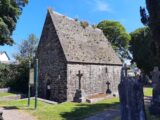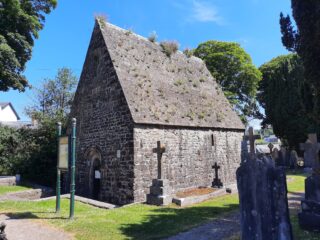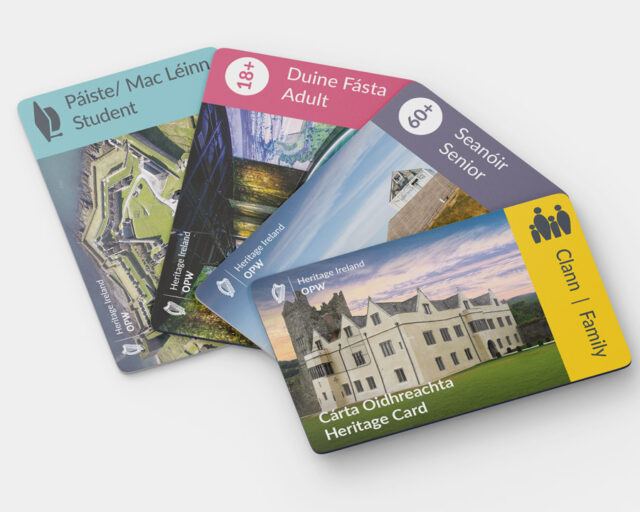Notice
St. Flannan’s Church is a state-owned National Monument in the care of the Office of Public Works
*Work is currently being carried out on the grounds, as a result the church is not open*
WARNING: It should be noted that these sites are unguided and a level of care and caution should be maintained during all stages of your visit. The Office Of Public Works (OPW) will not be held responsible for any damages, injuries, or losses that occur
St. Flannan’s Church
Flannan’s Church, also known as St. Flannan’s Oratory, stands 20m north of St. Flannan’s Cathedral. The cathedral dates to the 13th century and it contains an ogham stone carved by Thorgrim the Viking, a 12th century Celtic cross. The cathedral also has a belfry with eight bells, and St. Paul’s chapel. St Flannan’s Oratory is Romanesque in style and built in 1100AD, under the patronage of Muirchertach Ua Briain, king of Munster and great-grandson of Brian Bórama. After Muirchertach’s death in 1119 he is recorded in the Annals of Ulster as rí Érenn – king of Ireland.
The stone-roofed oratory has a rectangular barrel-vaulted nave with the walls built from sandstone. The nave was lit by two plain narrow lights, with the heads of the windows showing two slabs, leaned together. Each gable has a window, of neat ashlar construction, with the west gable window being round-headed. Both the north and south walls have a batter. The chancel arch has a projecting chamfered abacus under its arch. The Romanesque west doorway is of three orders. The inner order is plain. The middle order is supported by short round columns standing on modern bases and has decorated animal and foliate carvings on its capitals. The doorway arch has a round roll moulding with a double hollow. The outer order has plain jambs, and its arch has two roll mouldings with a hollow moulding between. Dentil decoration is visible on the roll hood-moulding, although it is very worn.
On the interior of the north wall is a cross-slab, in two pieces, originally found in St. Flannan’s well. The upper fragment of the sandstone cross-slab shows the head of a double-lined incised wheeled cross with a square centre and rectangular terminals. The lower fragment has an incised double-lined tapering shaft with a tenon at its base.
Visit Historic Environment Viewer for more information on St. Flannan’s Church
Protect our Past - Click here to read about the importance of protecting our country’s unique heritage sites
This national monument is protected in accordance with the National Monuments Acts 1930 to 2014
Gallery
Nearby sites to visit
Lough Gur Visitor Centre and Lakeshore Park
9,000 years of life
Approx. 31.5 km from St. Flannan’s Church
Portumna Castle and Gardens
Seventeenth-century splendour on the shores of Lough Derg
Approx. 34.9 km from St. Flannan’s Church
Adare Castle
Discover a medieval masterpiece, built for defence
Approx. 35.3 km from St. Flannan’s Church
Ennis Friary
Admire some exquisite Renaissance carvings
Approx. 36.6 km from St. Flannan’s Church
Askeaton Castle
A ruined stronghold of the earls of Desmond
Approx. 42.3 km from St. Flannan’s Church
Roscrea Castle, Gardens and Damer House/Black Mills
A place of medieval might and eighteenth-century elegance
Approx. 46.4 km from St. Flannan’s Church


